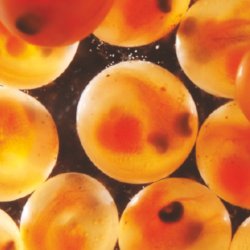A new thesis from the University of Gothenburg has studied farming of Atlantic wolffish and European lobster. The study showed that it is possible to produce high-value feed protein from unused by-products, for example, from the meat left on the bones after fish fillets have been removed.
James Hinchcliffe and his fellow researchers have also developed a species-specific feed to meet the need for suitable nutrients for lobster larvae. “One of the greatest challenges of farming lobster is improving survival in the larval stages. That’s why we’ve developed a knowledge base about the most beneficial feed composition for the early life stages.”
Lobster larvae grow and survive best when they can eat related species, which is why a lot of cannibalism is seen in today’s lobster farming industry. The studies investigated around ten different kinds of feed with local ingredients. Researchers found that a diet with a percentage of shrimp, which came from local by-products from the industry, was the best source and most promising candidate for sustainable lobster feed.
More information here.













